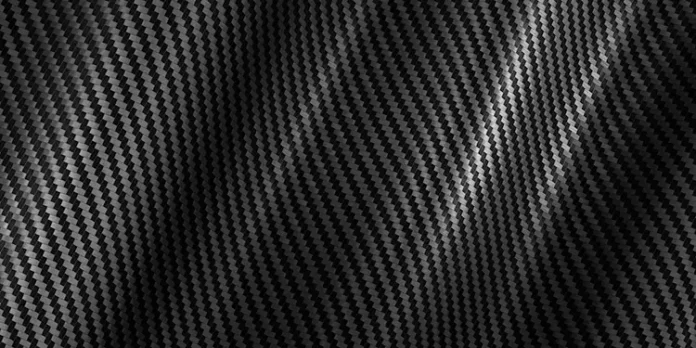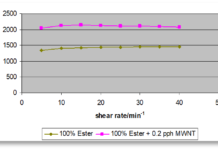By Liz Stevens, writer, UV+EB Technology
More companies are moving to UV-curable composites, leaving behind prior curing methods. UV curing can yield significant savings during processing, can make the production process safer for workers, can open up manufacturing flexibility to include 3D-printing options and can widen the range of usable resin formulations.
UV+EB Technology talked with Jason Rolland, senior vice president of materials at Carbon, Inc., Redwood City, California, and Stephen Brauer, president at Phlex Teknologies, North Wales, Pennsylvania, to find out what these companies are seeing around the increasing use of UV-curable composites. Carbon is a 3D-printing technology company offering the Carbon DLS™ process, which combines printers, software and materials to deliver functional parts with end-use performance and aesthetics. Phlex Tek is a technology solutions provider to the material sciences sector. Its products, including Phlex Tek LED-curable resin systems for pultrusion, filament winding and other composite applications, are used in durable goods components that feature superior performance and novel chemistries.
Why are companies converting to the use of UV technology in developing new composites
or thermosets?
“Composite producers are looking for process advancements that offer energy savings and productivity gains and that reduce hazardous materials in the workplace,” said Phlex Tek’s Stephen Brauer. He noted that recent hikes in energy prices have spurred renewed efforts to find ways to decrease energy costs and said that UV/LED curing offers significant cost reductions.
“UV-/LED-cured composites take minutes to set up and cure vs. hours and days for conventional latent-cured systems,” Brauer continued. “Productivity and efficiency gains are creating paradigm shifts in manufacturing processes.” And, said Brauer, utilizing UV/LED chemistry allows for the complete reduction of styrene and other solvents that are used in conventional resin systems.
Carbon’s Jason Rolland cited a different rationale that his company credits for the switch to UV curing. “UV technology offers a number of benefits over traditional thermoset and composite manufacturing,” said Rolland. “One significant benefit is that UV-curable resins are compatible with high-resolution 3D printers powered by DMD (digital micromirror device) light engines.” Rolland explained that the combination of high-resolution printing with high-performance materials opens up new applications for 3D printing.
Another benefit Rolland cited is that high-volume blending of UV-curable resins is a well-understood process that can be scaled rapidly. “This helps to drive economies of scale and lower part costs for production,” he said. An additional compelling reason for a switch to UV technology, according to Rolland, is that UV-curable resins also are modified readily once a given formulation-property space is fully mapped out. “This allows for relatively rapid tailoring of resin chemistry to meet the specific demands of various industries,” said Rolland.
How have technology and materials changed to allow UV/LED curing to be utilized in new ways?
Both Carbon and Phlex Tek have been leading-edge drivers in the development of UV-curing technologies and UV-curable materials.
“Carbon pioneered the use of dual-cure resins in additive manufacturing,” said Rolland. In this context, he explained, ‘dual-cure’ refers to resins which contain both UV-curable as well as thermally curable chemistries. “This,” Rolland said, “opened up large amounts of formulation space that was previously unavailable which, in turn, enabled the development of materials with novel properties.” He cited the example of dual-cure polyurethane chemistry, which allows for the generation of high-performance fatigue-resistant elastomers that are useful in the production of footwear and in other applications. “Additionally,” said Rolland, “the use of dual-cure epoxy chemistry enables new materials with a good balance of functional toughness and thermal stability.”
“At Phlex Tek,” said Brauer, “we produce resins and polymers that can be cured utilizing different energy sources, either heat or LED light. LED light with specific wavelengths will trigger a combination of catalysts and photoinitiators, causing a speedy cure cycle, and an exotherm (a compound that gives off heat during its formation), which also may support through-cure.” Brauer described that this LED process only takes seconds to minutes for a finished part, compared to the hours and sometimes days needed when using heat-cured conventional methods.
In moving away from heated ovens to the use of LED lamps, Phlex Tek offers polymer systems in which the reaction is initiated by a range of wavelengths from an LED lamp for use in thermoset composites, coatings and other high-strength materials. “There are several LED lamp producers that offer suitable intensity, density and a spectrum of wavelengths for this type of reactive chemistry,” said Brauer. “These LED lamps use less energy than typical UV bulbs, and they are less harmful to eyesight.”
What applications or industries are leveraging these advances in composites?
“PhlexTek is focused on thermoset composites,” said Brauer. “That includes prepreg, filament winding, open mold and other fiber-reinforced composites. It also includes coatings and adhesives applications where speed of cure and high throughput are priorities, but where high performance also is required.”
Carbon works with customers in industries including dental, consumer, life sciences, industrial and automotive. “In the automotive space,” Rolland said, “we help companies with on-demand production of electrical connectors, caps and cabin features that meet strict engineering requirements. In the consumer space, we work with customers to deliver high-value products with enhanced performance, protection and standout aesthetics.” Carbon works with aligner manufacturers to produce custom clear aligners, and dental labs utilize its technology for dentures, splints, trays, surgical guides and more. “In addition,” said Rolland, “our technology is utilized in the industrial industry to produce functional parts from jigs and fixtures to high-performance industrial components. In life sciences, cutting-edge medical devices are produced with Carbon’s rigid and flexible biocompatible materials.”
What is the next step in the use of UV-curing for composites/thermosets?
From prototype to production, energy curing offers advantages in the use of composites and thermosets. “The Carbon DLS™ process,” said Rolland, “enables customers to prototype and produce a wide range of functional, high-performance products that meet stringent industry-specific criteria.”
Phlex Tek intends to continue in its quest to improve and, in fact, disrupt the production process. “Our goal is to convert conventional processes in material sciences over to LED-curable systems,” said Brauer, “reducing energy consumption, increasing throughput and eliminating hazardous materials and VOCs, thus causing a paradigm shift.”
Carbon and Phlex Tek are proving that it is possible to make thermoset and composite production more economical, faster, more versatile and safer by leveraging the power and advantages of UV curing.
For more information, visit www.carbon3d.com and www.phlextek.com.







